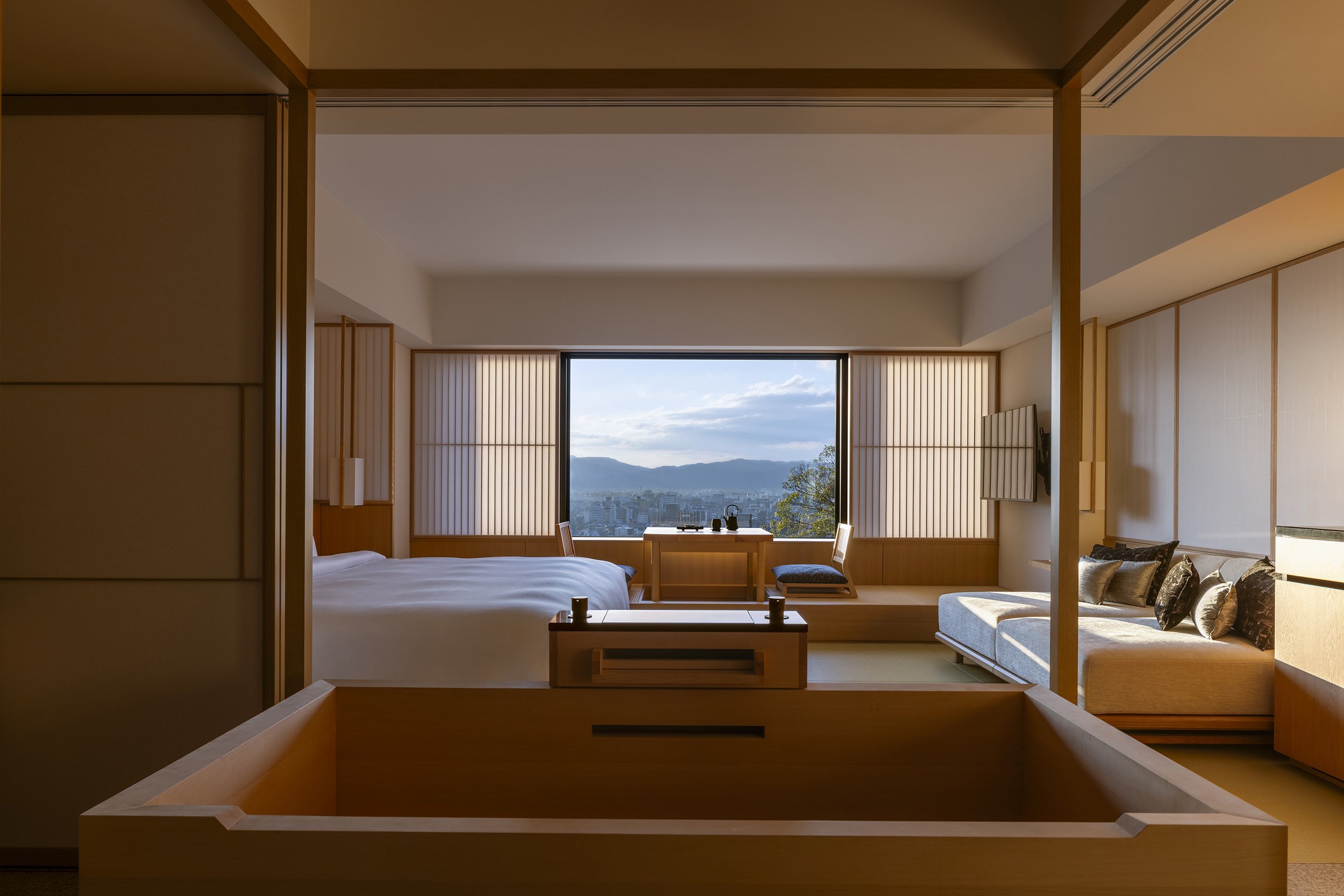A Living Room for the City: Shiroiya Hotel
For anyone who knows me by now will know that I’m a huge fan of everything art, architecture and design. So when I first saw Maebashi’s newly re-opened Shiroiya Hotel, I knew I had to pay a visit and see the space first hand.
Once a centre for the Japanese silk trade, the small city of Maebashi in Gunma Prefecture might not be as famous as some of its neighbours, but that is all set to change. Shiroiya Hotel is one of several projects spearheaded by owner, entrepreneur and previous Maebashi resident, Hitoshi Tanaka, with the goal of regenerating the city around the theme of ‘Where good things grow’.
A building with a rich history, the original timber frame of the 300-year-old Shiroiya Ryokan was replaced with the now-standing concrete building in 1975. Then named Shiroiya Hotel, the site closed its doors in 2008. Fastforward to 2021, and the hotel is split across two buildings; the main ‘Heritage Tower’ and the newly built ‘Green Tower’. Designed by Sou Fujimoto Architects, the idea is to create ‘a living room for the city’ – a space to be enjoyed not only by design-savvy tourists, but also for locals to feast on art and design any day of the week.
Upon entrance, guests are greeted by a huge typographic mural by American artist Lawrence Weiner, providing a glimpse of what is to come. The main lobby of the hotel really is the show stopper, with Leandro Erlich’s ‘Lighting Pipes’ stretching the full height of the vast piazza-like atrium and natural light pouring in from the roof. As you climb the stairs into the upper floors, your perception of space is altered across every level, creating a unique experience on each visit.
Looking for more hotels and travel guides? Subscribe to the weekly Views from Japan newsletter here.
Each of the 25 guest rooms features unique artworks and a different design by creatives including Michele de Lucchi, Jasper Morrison, and Leandro Erlich – my personal favourite being the Jasper Morrison room. Designed by the British designer, the room is completely wrapped in timber panelling, inspired by boxes used to transport art and also featuring a secret view of the central atrium, a cypress bathtub and Isamu Noguchi lighting.
“A space to be enjoyed not only by design-savvy tourists, but also for locals to feast on art and design any day of the week.”
On-site dining includes the RESTAURANT overseen by Mr. Hiroyasu Kawate who is also owner of Tokyo’s Michelin two-star French restaurant, Florilege. Gunma-born Chef Hiro Katayama pays tribute to ‘Joshu’ culture; reconstructing ingredients grown in the wilderness with a unique Japanese approach. For something a little more casual, choose from the Lounge, Bakery (opening November 2021), Patisserie, and the newly opened Blue Bottle Coffee.
Moving towards the back of the hotel, the ‘Green Tower’ brings even more architectural delights, again referencing Tanaka’s idea of natural growth for Maebashi City. Fujimoto Architects have created a public pathway leading guests directly though the hill, towards a neighbourhood with restaurants, bars and a quietly flowing river. The multi-dimensional hill also houses a series of cabins, including a Finnish sauna, a tea room and installation designed by Tatsuo Miyajima.
Getting Around
Shiroiya Hotel is around a two-hour drive north of Tokyo, and also easily accessible via a 50-minute Shinkansen to nearby Takasaki Station. Nearby parking is available, and the hotel offers a pick-up service from Takasaki Station for those arriving by train.
Local Highlights
For those looking for something adventurous and an escape to nature, guests can take hiking and canoe tours to nearby Oze and Mt. Tanigawa areas, with both half day and full day tours available. Confectionery store, Nakamata, is also a local favourite, serving up warabi mochi sweets and treats, with a design by Schemata Architects. And finally the retro Showa parlour restaurant, Momoya, is highly recommended for casual lunch dining.
Find out more via shiroiya.com
Photography & words by Ben Richards
Looking for a More Meaningful Way to Experience Japan?
Introducing Views from Japan, a brand new travel guidebook welcoming you to join a travel community that shares a deep passion for Japan and its unique cultural traditions. Across 280 detail-packed pages, I give you all of the tools you need to create a unique and memorable trip to Japan, whether you are travelling for a solo trip, honeymoon or family adventure.















